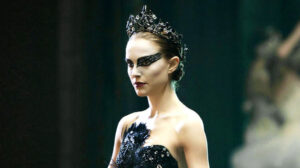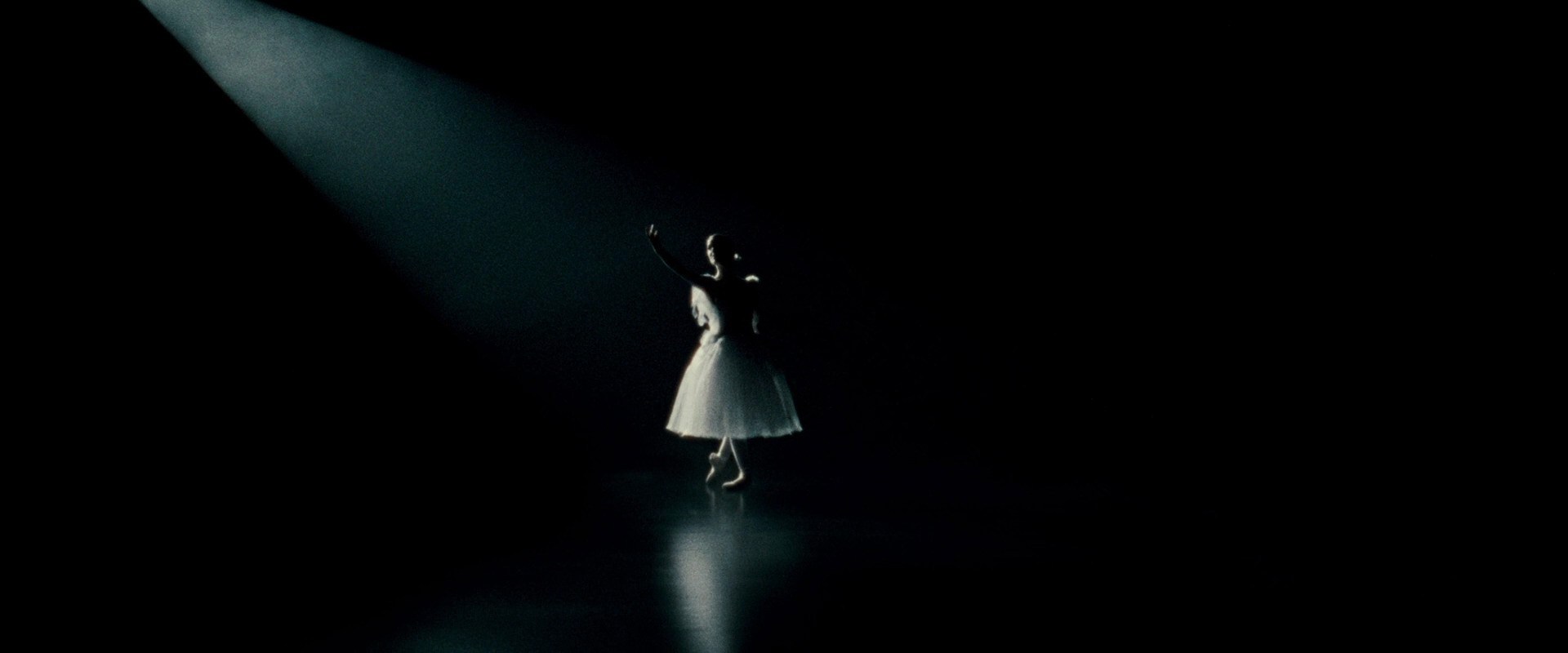The 2010 movie “Black Swan” by director Darren Aronofsky follows the story of Nina, a ballerina who is on her path to strive for perfection in her role as the swan queen in the eminent ballet “Swan Lake.” A central theme that not only appears in this Oscar–winning piece but in other Aronofsky films such as “The Wrestler” and “Pi” is the extreme sacrifice of people in pursuit of success in their professions. However, putting it into the context of modern society, the theme “Black Swan” goes beyond the occupational obsession scope. On watching the movie, I was astonished to feel how close the movie relates to my experience and observation of being an Asian woman. For me, the film is an accurate representation of the toxic perfectionism brimful in Asian culture and its effects on the universally distressing experience of Asian women on the journey of exploring and defining their feminine identities. This essay will clarify how “Black Swan” can be considered a depiction of how toxic perfectionism affects Asian women’s feminine identities by analyzing the similarities between the movie and the real–life context.


In Black Swan, toxic perfectionism is depicted through the themes of duality and the male gaze. Firstly, the theme of duality is embodied by the constant appearances of the mirrors and the black swan, or the appearance of Lily, another ballerina whom Nina is haunted by being misplaced. In her article “Mirror, mirror: fractured female identity in Black Swan“, Gabrielle O’Brien asserts that the conspicuous occupancy of the mirrors throughout the movie introduces the audience to the nature of the ballet world and foregrounds the surface identity of women (4). The mirrors appear in every place Nina most frequents, from Nina’s bedroom, dressing room, and practice room, to the train. Nina practices, dresses, looks at herself, and judges herself in front of mirrors: her world is fully bounded by her self–perception through external reflection, leading to extreme self-consciousness of her body. Unlike Arofnosky’s previous movie “The Wrestler” which digs into the wrestling world that embraces extreme strength and brute, in “Black Swan”, human bodies are juxtaposed with ballet, an art form that adheres to social standards for women’s bodies, dignifying the subtlety, symbolism, grace, and beauty of feminine physicalities (Goldenberg, 110). It is an untold standard that ballerinas should be thin so their moves are more elegant and flexible, therefore, the perpetual presence of the mirrors underscores the importance of external appearance for Nina even more, in which she is firm to stay extremely thin. The theme of duality is also deeply highlighted by the presence of Lily–the potential black swan. In one of the early scenes in the movie, Nina is sitting on the train going to practice when she sees a reflection of a woman that Nina mistakes for being herself, but in the end, the audience is suggested that the reflection turns out to be of Lily, the new ballerina. From here, we are exposed to Nina’s latent fear and jealousy of Lily. While Nina perfectly captures the essence of the white swan, becoming the black swan poses a challenge for her, so when Lily steps in, Nina notices that Lily possesses all the suitable features to be the black swan that Nina has yet to possess: Lily is wild, sexually expressive, charismatically arousing, and spontaneous–the total opposite of Nina’s innocent and virginal persona. In one scene in the movie, as both Thomas and Nina are gazing at Lily’s dancing, Thomas tells Nina: “Watch the way she moves. Imprecise…but effortless…”. The duality acts as a stressor, meaning Nina needs to obtain a second persona–the one of the black swan–to get the role of the swan queen. Besides duality, the male gaze is a major factor in pushing Nina to aim for perfection in her personification of the black swan. In “Black Swan”, this factor takes the form of the ballet company director Thomas. He is the mentor, the one who introduces opportunities for Nina but also creates challenges to push her to be more suitable for the swan queen role. Thomas is dominant, and assertive, and communicates with Nina with explicit sexual gestures. He forced–kisses Nina when she comes to his office to ask for the role; he touches her private part when mentoring her dance; he encourages her to discover her darkest aspect by deliberately giving her sexual “homework”. Thomas is built as a character with questionably inappropriate actions; however, Thomas is the one who holds authority. He can decide whether to give the protagonist the role or not. Initially, Thomas intends to give the role to another dancer but after the sexual encounter with Nina, he gives her the part. The power of Thomas and how he has power over his dancers, especially female dancers, is more punctuated by the appearances of Beth, the old muse of the company, the one who used to be the main dancer of many plays in the part of the company. Beth was once Thomas’s “little princess”, but now as she holds no value to the company anymore, Thomas no longer needs her, and her career with ballet is ended by Thomas as she is required to “retire”. Beth’s career from the beginning to the end lies in the palm of Thomas, and the audience forecasts the future of Nina through the appearance of Beth, when in the end, Beth becomes insane and self–harms herself so severely that she has to be hospitalized. As Thomas considers Lily to play the black swan, the fear of replacement amplifies for Nina, so she has no other choice but to go to the edge to pick on the new identity of the black swan regardless of the consequences.


For Asian women, toxic perfectionism can be explained by Confucianism and historical standards. First of all, we look into the causes of why women are culturally associated with more expectations and why they are more prone to abide by social standards than men. In her work “Black Swan/White Swan: On Female Objectification, Creatureliness, and Death Denial”, Jamie Goldenberg analyses the prompt above by using the Terror Management Theory (TMT). She states that because women’s bodies are endowed with unique features such as the ability to menstruate, carry, and deliver babies, society places greater importance on women’s appearances, and as physical creatureliness is deeply highlighted, women are more afraid or more continually reminded of death (108). As a result, they are motivated to achieve big things and are inclined to adhere to social norms with all the expectations for their appearances. In addition, in the past, due to women’s connection to reproduction functions, they had limited access and were dismissed from possession in the intellectual field; therefore, men were privileged of education in their process of discovering their identities whereas women were associated with domestic work and natural physical features (Calvo–Pascual, 124). This explains why women are more attached to their bodily values than men. In Asian culture, this situation is even more heightened. Toxic perfectionism for women has permeated Asian culture where for thousands of years until now, women have always been expected to be highly distinguished in every aspect of life. Many parts of Asia are affected by Confucianism, an ideology stemming from the Chinese renowned philosopher Kong Qiu, in which a woman’s value is oftentimes assessed by her appearance, talents, virtue, virginity, and ability to bear a son. In Confucianism old rules, men are superior and women are inferior, and with such value deeply rooted in the culture for centuries, the idea of patriarchy in the society is more noticeable (Hefandia, Kusuma, & Ruslianti, 2). Once the gender roles in society are settled, people behave according to the expectations of that gender role, which turns into gender stereotypes, causing people to follow what they are expected to do or become who they are expected to be, and so it gradually turns into a culture (2). Consequently, standards for good Asian women are based on the males’ liking: women have to be quiet, obedient, good with domestic work, subordinate to the males (either husband, or dad, or son), and loyal to their husbands (Gao, 115). This trait is considered the standard feminity, one that is favored for women to possess, and this is associated with being slender and petite in figure (Yu, 4), which has remained with time and is still considered the ideal figure for women until the modern day. Overall, Confucianism is a set of ideas that became a cultural standard thousands of years ago in China and expanded significantly to other parts of Asia, directly forming endless expectations for women regarding both appearances and characteristics. A result of this can be seen in research by Noh, Kwon, Yang, et.al, in which it is revealed that normal-weight and underweight women in some Asian countries in the survey like China, Taiwan, South Korea, and Japan tend to consider themselves normal to overweight, in contrast to the results of women from Europe and the United States who have a higher percentage of underestimating their weight (2). Even now, many modern Hollywood movies still reflect the expectations for well–rounded Asian women: in the movie “Crazy Rich Asians“, the rich Chinese–Singaporean mother of the male protagonist after seeing her son’s fiancee, says to her: “You will never be good enough” because the girl does not live up to the woman’s standard of a good woman for her son; in “Everything, Everywhere, All at Once“, the Chinese immigrant mother is portrayed to be dealing everything in the house, from housework and running a business, to dealing with family troubles. Asian women are expected to be so good at so many things but also not to supersede the males (because of the lingering Confucianist ideas) that it has become a social dilemma for women to define their likings, opinions, and identities in daily life.
The figure of Nina in “Black Swan” bears many resemblances to the image of an Asian woman on the journey of defining their feminine identity. Nina’s character resembles the perfect image of a woman that Asian culture depicts–being virginal, innocent, ambitious about her career, listening to her mother, thin, and pale, a perfect fit for the white swan role–but throughout the film, we realize for Nina to successfully encapsulate the black swan, she has to get rid of her old persona, the one that is Asian’s standard for a perfect woman. The black swan is freely wild, consensual, and expressive in sexuality–the total opposite of Nina, and the total opposite of Asian virtuous expectation. Realizing she needs to dispose of her old self, Nina overextends herself, she drastically changes, dumps all of her teddy bears, goes to late-night parties, and makes out with strangers regardless of her mother’s insisted objection. Nina has liberated her sexual desire, and gotten rid of her old innocent, strict self, to become the black swan. This is a metaphor for how Asian women break through Confucianist standards of perfection to explore and define their own identities, especially when it is considered unvirtuous for women in Asian culture to express their sexual desires or any aspects relating to sex life (which comes from the Confucianism ideology). Another resemblance between Nina and Asian women is the fact that both are largely affected by the male gaze. As analyzed above, for Nina, Thomas is the one who can control and decide her fate and future in her career as a ballerina. For Asian women, Thomas can be any male since the Confucianist doctrines have always placed women inferior to men. Regarding social status, in modern times, although the situation of male chauvinism has lessened tremendously since women and men are treated equally with equal rights, it is irrational to say that society can eradicate Confucianist perceptions of women immediately after having existed and propagandized for so long, which causes many societal challenges for the existence of women, and therefore, women unceasingly contemplate and study their own identities.
Some can raise the question of as Nina’s metamorphosis into the black swan leads to her destroying herself, does that also mean for women to subdue social expectations of perfectionism to find themselves, they will have to eventually harm themselves? The answer is no. Before her change into a new persona, Nina is already depicted as frail, constantly nervous, and suffering from phases of paranoia (Calvo-Pascual, 121). From one of the very first shots, Nina becomes anxious as she spots a reflection of someone she thought was her in black clothes (121). Later in the film, the audience is gradually exposed to Nina’s unstable mentality and illnesses: she picks her skin until it bleeds, starves herself, forces herself to vomit when stressed, and from time to time has a delusion of herself, her mother, and Lily. Nina’s mental illness does not reflect the same situation for Asian women on their path to defining their identities, but rather a metaphor for how being contained by social standards can cause physical and mental harm to women. It is after she completely contains the new persona of the black swan that Nina becomes totally independent, and firm, and fights for what she wants. There is a scene when Nina comes back to her dressing room after her act of the white swan and sees Lily sitting on her chair, saying “How about I dance the Black Swan for you?”. Nina, on the last verge of her psychosis, pushes Lily up the wall, picks up a piece of a shattered mirror, and as she kills Lily, saying: “It’s my turn.” This acts as a turning point for Nina’s character development. She is now braver than ever before and determined, and nothing can stop her from pursuing what she defines as “perfection” for her. She is now free from all social norms and pressures.
In conclusion, “Black Swan” is not only an insight into the toxic professional ballet world but also into the Asian culture where women are objectified and held to surreal expectations. One can say there is no clear solution to the situation in Asian countries other than to educate people on gender equality and eradicate any fallacy of women’s image including the toxic representations of Asian women on social media platforms. After all, women are just human. And just like a line in the movie El Dorado: “To err is to human”, women have all the rights to make mistakes, not conform to others’ opinions, and live freely as normal human beings.
Annotated Bibliography
Calvo-Pascual, Mónica. (2016). “IT WAS PERFECT”: DESIRE, CORPOREALITY, AND DENIAL IN DARREN ARONOFSKY’S BLACK SWAN. ES Review: Spanish Journal of English Studies. 37. 119-132. https://www.researchgate.net/publication/320076184_IT_WAS_PERFECT_DESIRE_CORPOREALITY_AND_DENIAL_IN_DARREN_ARONOFSKY’S_BLACK_SWAN.
In this article, Calvo-Pascual looks into the historical, social, and psychological reasons why women often deny their “corporeal demand” to pursue perfection and the consequences of this act on women’s physicality and mentality as she studies the movie “Black Swan”. The author also analyses Nina’s actions and psychotic condition based on the psychological studies of some mental disorders including eating disorders, and OCD while examining the causes of these conditions and their mechanism relating to perfectionism in women.
This article explores Nina from a novel view of psychology, which helps expand my first argument on the causes behind perfectionism in Nina and relates to how the case can be similar to women in reality. The article’s statement on sex as a turning point of breaking repression for Nina in the movie associates with the same situation for women in this society for Asian women.
O’Brien, Gabrielle. “Mirror, mirror: fractured female identity in Black Swan.” Screen Education, No. 75, Sep 2014: 102-107. Gale Academic OneFile,
O’Brien analyses the film as a cinematic representation of broken female identity. The image of the mirror throughout the film shows how narrow and superficial the female identity is perceived, being judged solely through external reflection and beauty of oneself through others’ lenses. The author focuses on examining two factors, namely the male gaze, and the doppelganger or the duality that every woman happens to either fight or pursue, both of which show how women are objectified, and how women strive for perfectionism through battling between external and internal presentation.
I use the analysis of the mirrors in this article to support my arguments when exploring the protagonist’s female identity in the movie. I also use the article’s mention of the male gaze and women objectification to introduce my intervening discourse, relating the analysis to the experience of a woman in an Asian culture that is embedded with male chauvinism and stereotypes of a well-rounded woman.
Goldenberg, J.L. (2013). Black Swan/White Swan: On Female Objectification, Creatureliness, and Death Denial. In: Sullivan, D., Greenberg, J. (eds) Death in Classic and Contemporary Film. Palgrave Macmillan, New York. https://doi.org/10.1057/9781137276896_7.
Goldenberg uses terror management theory (TMT) to link mortality and creatureliness to the reason why women are inclined to “comply with societal standards and expectations” and strive for perfection. She regards the black swan figure in the movie as a representation of human mortal and consensual embodiment, while the white swan is the persistent longing for immortality or perfection against the former. The author implies that the death of the white swan or Nina at the end means Nina has successfully let go of her sexual repression and anxiety of death, helping her achieve her perfection.
Goldenberg has scientifically proved her point which helps solidify her points even more. I make use of the analysis of mortality and creatureliness to provide the essay with the reason why women in general and the protagonist in the movie are so obsessed with rising to perfection in her ballerina career. Also, I can make use of the analogy between death and virginal persona mentioned in the analysis to delve into how women especially Asian women oppress their sexuality because it is considered unvirtuous of them to express consensual feminity.
Hefandia, D. A., Kususma, D. L., & Ruslianti, A. (2023). Women Empowerment in Comparison to Asian Female Gender Roles and Stereotypes in Crazy Rich Asians Novel, JOLLT Journal of Languages and Language Teaching, 11(4), pp. 933-942. DOI: https://doi.org/ 10.33394/jollt.v%vi%i.8737.
This research looks into “Crazy Rich Asians” to study how the film presents gender roles and stereotypes to the audience. Also, the research investigates how women’s empowerment is portrayed in the film and then relates it to real-life scenarios in society generally and in Asian society particularly. The research also mentions Confucianism to study the root of gender patriarchy and how it shapes the culture until the present day.
While most of the points are made to analyze the movie “Crazy Rich Asians”, those points can back up my arguments in my essay very well. I make use of Confucianism study in the research as supporting points for my argument of toxic perfectionism for Asian women. I also got inspired by the research to use the characters in the film as an example of how Asian women are always being highly judged and expected.
Xiongya Gao Race, Gender & Class, Vol. 10, No. 3, Interdisciplinary Topics in Race, Gender, and Class (2003), pp. 114-125 (12 pages) https://www.jstor.org/stable/4167509.
Gao looks into how Confucianism marks a turning point for society to consider women ‘subhuman beings’. The author shows how the ideology tremendously affects Chinese women’s status by analyzing several ideas relating to women’s standards, marriage laws, and family/social habits. Later on, the author associates the effects of Confucianism with the everlasting social injustices for Chinese women.
This research is directly helpful to my essay because of its rich insightful analyses of Confucianism and its negative effects on Chinese women. I use some findings in the research as evidence for my argument so it becomes more logical and persuasive.
Noh, JW., Kwon, Y.D., Yang, Y. et al. Relationship between body image and weight status in East Asian countries: comparison between South Korea and Taiwan. BMC Public Health 18, 814 (2018). https://doi.org/10.1186/s12889-018-5738-5.
Like its name, the article looks into the relationship between body image and weight status in some East Asian countries. The authors have surveyed at great extent, collecting opinions and information from many women all over the world, including those from Europe and the United States, on how they perceive their weight status. Based on the information, the authors analyze the statistics and conclude.
While most of the article is not relevant to my essay, the statistics of the research is a crucial information that I use in the essay as evidence for Asian women’s tendency to overestimate their weight and want to be thinner. This is the most obvious consequence of Confucianism norms have on today’s perception of women.
Yu, Lifei. Chinese Epidemic: The Thin Ideal. Medium (2021). https://medium.com/writ-150-at-usc-fall-2020/chinese-epidemic-the-thin-ideal-f3420ec8f92a.
In this article, Lifei Yu retells her experience as an Asian woman living in a Western country as she looks into the history of Chinese beauty standards for women. The author provides viewers with many detailed historical backgrounds of the old Chinese society where a lot of depraved customs like foot binding exist and explains the cause of social expectations for women to be thin.
I make use of the article’s information on beauty standards’ origins for Chinese women. This is another piece of evidence for my argument on the reason why society considers thin women as the standard, and as women are prone to abide by expectations, they strive to keep their bodies thin.

Comments are closed, but trackbacks and pingbacks are open.